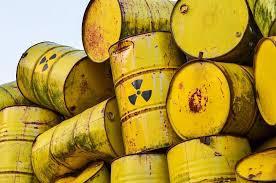Nuclear Waste Management Market Pain Points Hindering Global Safety Solutions
The nuclear waste management market, while critical to the future of clean energy, is fraught with complex and persistent pain points. As nations expand or revive their nuclear power programs to meet net-zero goals, the volume and complexity of radioactive waste continue to grow. Yet, despite technological progress, the market struggles with deeply rooted challenges that hinder efficiency, safety, and public acceptance. These issues must be addressed comprehensively for nuclear energy to truly become a sustainable and socially accepted solution.

Lack of Long-Term Storage Infrastructure
One of the most pressing pain points in the nuclear waste management market is the lack of adequate long-term disposal infrastructure. High-level waste (HLW), such as spent nuclear fuel, remains radioactive for thousands of years and requires permanent, secure isolation from the environment. However, most countries still rely on interim storage solutions, often co-located with reactor sites.
Deep geological repositories (DGRs), considered the gold standard for long-term waste disposal, are still in early stages of development in many regions. While countries like Finland and Sweden have made progress, the majority of the world lacks fully operational DGRs, resulting in a growing stockpile of high-risk materials with no permanent home.
Regulatory Fragmentation and Bureaucratic Delays
Another significant barrier is the regulatory fragmentation across jurisdictions, which creates inconsistent standards and procedural delays. Each country has its own regulatory frameworks, often subject to political change, public opposition, and funding constraints. Even within nations, state and federal agencies may have conflicting mandates, causing project delays or cancellations.
Lengthy permitting processes, unclear liability frameworks, and shifting political priorities often derail waste management projects. These uncertainties discourage private investment and slow technological implementation, preventing timely upgrades to outdated infrastructure and waste handling systems.
High Costs and Financial Risks
Nuclear waste management is inherently capital-intensive, with high upfront costs, long project timelines, and uncertain returns. Building secure storage facilities, operating treatment systems, and maintaining monitoring protocols over decades or even centuries requires substantial and sustained financial commitment.
The cost burden typically falls on governments or utility providers, many of which struggle with tight budgets and competing energy investments. In some countries, decommissioning funds or nuclear waste levies are insufficient to cover the full lifecycle costs, raising concerns about future funding shortfalls and cost overruns.
Public Opposition and NIMBY Attitudes
Public resistance to nuclear waste facilities, driven by health, environmental, and property value concerns, is a persistent pain point. Known as the “Not In My Back Yard” (NIMBY) phenomenon, this resistance has derailed many proposed storage and disposal sites, even after years of technical and environmental assessments.
Mistrust in authorities, historical accidents like Chernobyl and Fukushima, and limited public understanding of nuclear science contribute to widespread skepticism. Gaining public acceptance requires transparent communication, long-term community engagement, and credible assurances of safety—strategies often underutilized by industry and government players.
Technological Limitations and Legacy Waste
While technological innovation has progressed, there are still significant gaps in handling legacy nuclear waste—radioactive materials from early nuclear programs, military use, and outdated reactor designs. Much of this waste is poorly characterized, lacks detailed records, and presents unique challenges for safe treatment or disposal.
Existing technologies may not be capable of managing these complex waste forms cost-effectively. Moreover, upgrading legacy sites involves technical uncertainty, worker safety concerns, and high regulatory scrutiny, all of which prolong remediation efforts and inflate costs.
Transportation and Security Concerns
The movement of nuclear waste from reactors to storage or disposal facilities poses logistical and security risks. Transporting radioactive materials through populated or geopolitically sensitive areas raises concerns about potential accidents, sabotage, or theft.
Strict regulatory controls and security protocols are essential but also contribute to delays and high costs. Public protests and local government restrictions often obstruct transport routes, complicating national waste management strategies that rely on centralized facilities.
Skilled Workforce Shortages
The nuclear waste sector faces a growing skills gap, particularly in fields such as nuclear engineering, radiation safety, robotics, and project management. As experienced professionals retire, there is a lack of younger talent entering the industry due to its specialized nature and perceived risks.
This shortage hampers the development and operation of advanced waste systems, slows innovation, and raises the likelihood of safety lapses or project inefficiencies. Investment in education, training, and international collaboration is crucial to rebuilding the workforce needed for long-term nuclear waste management.
Conclusion
The pain points in the nuclear waste management market—ranging from infrastructure deficits and regulatory hurdles to public resistance and technical challenges—highlight the complexity of safely managing radioactive materials over extended timeframes. These issues not only threaten environmental safety but also undermine the viability of nuclear energy as a long-term clean power source. Addressing these systemic challenges requires a combination of sustained investment, transparent governance, international cooperation, and innovative thinking to build a future where nuclear energy and its byproducts are managed responsibly and effectively.
- Art
- Causes
- Crafts
- Dance
- Drinks
- Film
- Fitness
- Food
- Juegos
- Gardening
- Health
- Home
- Literature
- Music
- Networking
- Other
- Party
- Religion
- Shopping
- Sports
- Theater
- Wellness


